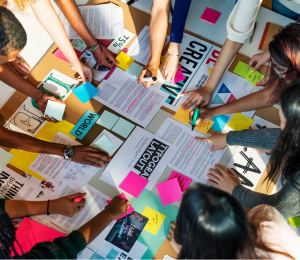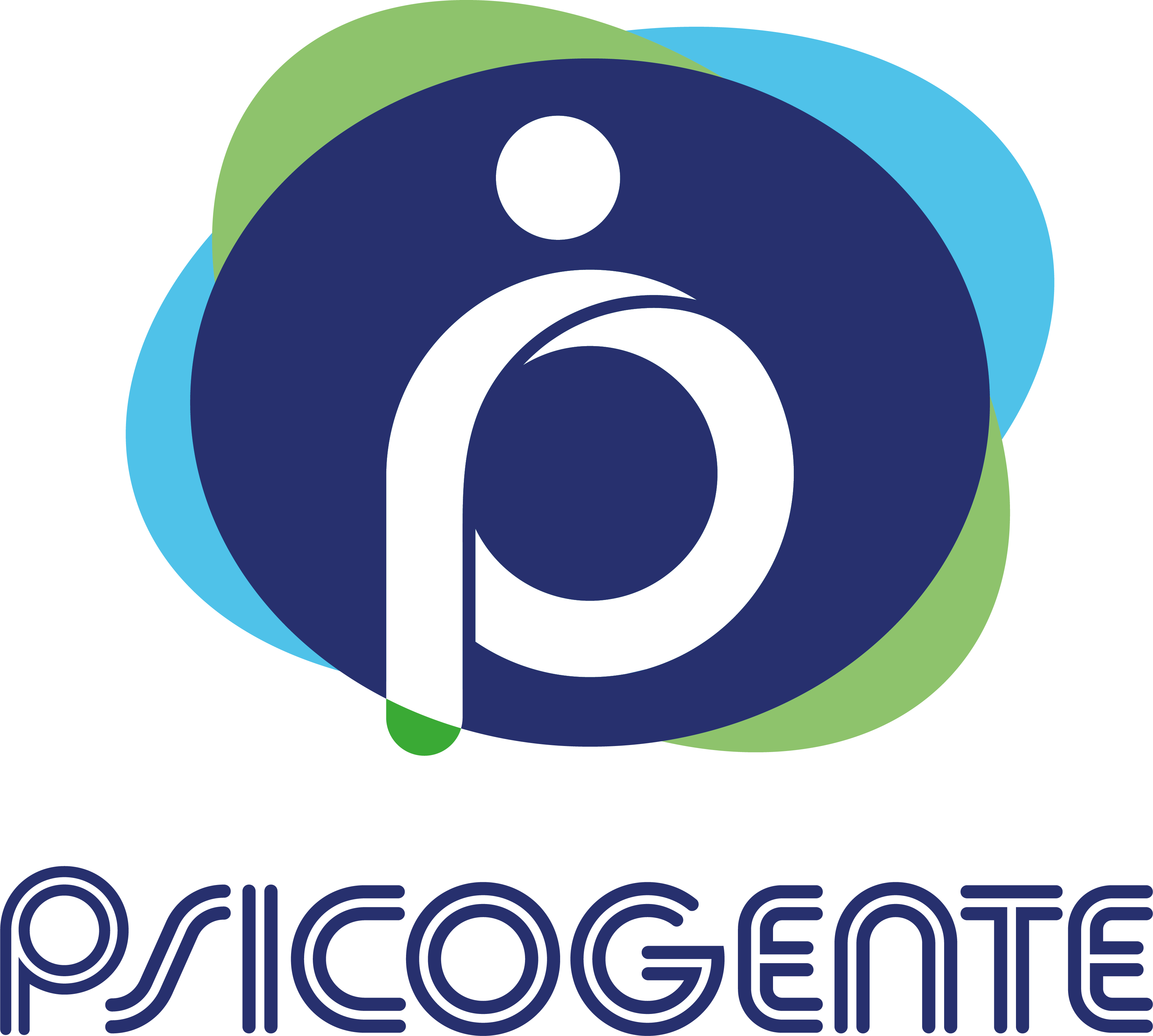Tecnoestrés en población mexicana y su relación con variables sociodemográficas y laborales
Technostress in the mexican population and its relationship with sociodemographic and labor variables
DOI:
https://doi.org/10.17081/psico.23.44.3473Palabras clave:
tecnoestrés, tecnoansiedad, tecnofatiga, tecnoadicción, TIC, tecnologíaResumen
Objetivo: Medir la relación entre variables sociodemográficas, variables laborales y la frecuencia del uso de las tecnologías, con el nivel de tecnoansiedad, tecnofatiga y tecnoadicción como experiencias del tecnoestrés, en una muestra de adolescentes, jóvenes y adultos mexicanos.
Método: Se aplicaron las escalas para medir tecnoestrés y tecnoadicción de Cazares & Villavicencio (2019) y un cuestionario de variables sociodemográficas y laborales de elaboración propia, a un total de 981 participantes mexicanos entre 13 y 69 años, utilizando la herramienta de formularios de Google. Los datos obtenidos fueron sometidos a un análisis de nivel descriptivo, correlacional e inferencial (Kerlinger & Lee, 2002), con ayuda del programa estadístico SPSS v.20.
Resultados: Respecto a la tecnofatiga, los resultados arrojaron diferencias significativas por sexo (U = 104026.50, p=.037) y antigüedad en el trabajo [χ2(3) = 11.213, p = .011] y una significancia marginal por estado civil (U = 78329.00, p=.058). En cuanto a la tecnoadicción, se encontraron diferencias significativas por estado civil (U = 76121.50, p=.012) y ocupación [χ2(2) = 4.698, p =.008]. Con relación a la tecnoansiedad, fueron arrojadas diferencias significativas por tipo de empresa (U = 61348.00, p=.049).
Finalmente, se encontró que las personas con mayor nivel de escolaridad, los directivos y los empresarios independientes, presentaron mayor tecnoansiedad, tecnofatiga y tecnoadicción.
Conclusiones: Los resultados permiten afirmar que en México existe la presencia de tecnoestrés. Además, se demuestra la relación entre las experiencias del tecnoestrés y variables sociodemográficas (sexo, estado civil, ocupación y escolaridad) y laborales (antigüedad laboral, tipo de empresa y nivel de puesto). Los resultados constituyen las primeras aportaciones de la investigación del tecnoestrés en México, país que impulsa el uso de la tecnología.
Descargas
Citas
Abrahams, D. A. (2010). Technology adoption in higher education: a framework for identifying and prioritising issues and barriers to adoption of instructional technology. Journal of Applied Research in Higher Education, 2(2), 34-49. https://doi.org/10.1108/17581184201000012
Agogo, D., & Hess, T. J. (2015). Technostress and technology induced state anxiety: Scale development and implications. In Thirty Sixth International Conference on Information Systems, pp.1-11. Fort Worth, Texas, EUA. https://agogodavid.com/wp-content/uploads/2015/06/Agogo-and-Hess-ICIS-2015-Submit.pdf
Ahmad, S., Rafiq, M., & Ahmad, S. (2018). Gender disparities in the use of internet among graduate students of a developing society: A case of Pakistani universities. Global Knowledge, Memory and Communication, 67(4/5), 226-243. https://doi.org/10.1108/GKMC-11-2017-0092
Alfaro de Prado, A. (2008). Nuevas tecnologías y nuevos riesgos laborales: Estrés y tecnoestrés. Revista digital de salud y seguridad en el trabajo, (1), 123-155. http://rabida.uhu.es/dspace/bitstream/handle/10272/3414/b15756531.pdf?sequence=1
Allan, J., & Lawless, N. (2003). Stress caused by on‐line collaboration in e‐learning: a developing model. Education + Training, 45(8/9), 564-572. https://doi.org/10.1108/00400910310508955
Al-Yafi, K., El-Masri, M., & Tsai, R. (2018). The effects of using social network sites on academic performance: the case of Qatar. Journal of Enterprise Information Management, 31(3), 446-462. https://doi.org/10.1108/JEIM-08-2017-0118
Baloglu, M., & Cevik, V. (2008). Multivariate effects of gender, ownership, and the frequency of use on computer anxiety among high school students. Computers in Human Behavior, 24, 2639-2648. https://doi.org/10.1016/j.chb.2008.03.003
Brooks, S. (2015). Does personal social media usage affect efficiency and well-being? Computers in Human Behavior, 46, 2-37. https://doi.org/10.1016/j.chb.2014.12.053
Brooks, S., & Califf, C. (2017). Social media induced technostress: Its impact on the job performance of it professionals and the moderating role of job characteristics. Computer Networks 114, 143-153. https://doi.org/10.1016/j.comnet.2016.08.020
Cao, X., Masood, A., Luqman, A., & Ali, A. (2018). Excessive use of mobile social networking sites and poor academic performance: Antecedents and consequences from stressor-strain out come perspective. Computers in Human Behavior, 85, 163-174. https://doi.org/10.1016/j.chb.2018.03.023
Cao, X., & Sun, J. (2018). Exploring the effect of overload on the discontinuous intention of social media users: An S-O-R perspective. Computers in Human Behavior, 81, 10-18. https://doi.org/10.1016/j.chb.2017.11.035
Cao, X., & Yu, L. (2019). Exploring the influence of excessive social media use at work: A three dimension usage perspective. International Journal of Information Management, 46, 83-92. https://doi.org/10.1016/j.ijinfomgt.2018.11.019
Carlotto, M., Welter, W. G., & Jones, A. (2017). Technostress, Career Commitment, Satisfaction with Life, and Work-Family Interaction among Workers in Information and Communication Technologies. Actualidades en Psicología, 31(122), 91-102. http://dx.doi.org/10.15517/ap.v31i122.22729
Cazares, V. M., & Villavicencio, E. (2019). Adaptación de dos escalas para medir tecnoestrés y tecnoadicción en una población laboral mexicana (tesis de licenciatura). Facultad de Psicología, UNAM, Ciudad de México. http://132.248.9.195/ptd2019/mayo/0788864/Index.html
Çoklar, A., & Sahin, Y. (2011). Technostress levels of social network users based on ICTs in Turkey. European Journal of Social Sciences, 23(2), 171-182. https://www.researchgate.net/publication/287599284_Technostress_levels_of_social_network_users_based_on_ICTS_in_Turkey
Coppari, N., Bagnoli, L., Codas, G., López, H., Martínez, U., Martínez, L., & Montanía, M. (2018). Validez y confiabilidad del cuestionario de tecnoestrés en estudiantes paraguayos. Perspectivas en Psicología, 15(2), 40-55. http://www.seadpsi.com.ar/revistas/index.php/pep/article/view/412
Coppari, N., Bagnoli, L., Codas, G., Montanía, M., Martínez, Ú., & López Humada, H. (2017). Uso de Tecnologías de la Comunicación e Información y Tecnoestrés en Estudiantes Paraguayos: su relación con la edad. Cuadernos de Neuropsicología/ Panamerican Journal of Neuropsychology, 11(3), 166-181. http://www.cnps.cl/index.php/cnps/article/view/306/325
De Wet, W., Koekemoer, E., & Nel, J. A. (2016). Exploring the impact of information and communication technology on employees’ work and personal lives. SA Journal of Industrial Psychology, 42(1), 1330. http://dx.doi.org/10.4102/sajip.v42i1.1330
Dhanapal, S., Vashu, D., & Subramaniam, T. (2015). Perceptions on the challenges of online purchasing: a study from “baby boomers”, generation “X” and generation “Y” point of views. Contaduría y Administración, 60(1), 107-132. https://doi.org/10.1016/j.cya.2015.08.003
Dhir, A., Yossatorn, Y., Kaur, P., & Chen, S. (2018). Online social media fatigue and psychological wellbeing —A study of compulsive use, fear of missing out, fatigue, anxiety and depression. International Journal of Information Management, 40,141-152. https://doi.org/10.1016/j.ijinfomgt.2018.01.012
Duke, É., & Montag, C. (2017). Smartphone addiction, daily interruptions and self-reported productivity. Addictive Behaviors Reports, 6, 90-95. https://doi.org/10.1016/j.abrep.2017.07.002
Gaspar, H. S. (2016). Bases psicosociales del uso del smartphone en jóvenes: un análisis motivacional y cross-cultural (Tesis Doctoral). Facultad de ciencias de la información, Universidad Complutense de Madrid. http://eprints.ucm.es/35447/1/T36788.pdf
Gaudioso, F., Turel, O., & Galimberti, C. (2017). The mediating roles of strain facets and coping strategies in translating techno-stressors into adverse job outcomes. Computers in Human Behavior, 69, 189-196. https://doi.org/10.1016/j.chb.2016.12.041
Grant, C. A., Wallace, L. M., Spurgeon, P. C., Tramontano, C., & Charalampous, M. (2019). Construction and initial validation of the E-Work Life Scale to measure remote e-working. Employee Relations, 41(1), 16-33. https://doi.org/10.1108/ER-09-2017-0229
Gobierno de la Ciudad de México. (Febrero, 2018). Activan internet gratuito en línea 1 del metro. https://www.metro.cdmx.gob.mx/comunicacion/nota/activan-internet-gratuito-en-linea-1-del-metro
Gobierno de la Ciudad de México. (Febrero, 2019). México Conectado. https://mexicoconectado.gob.mx/
Guillén, Z. F. (2016). Relación entre los cinco grandes rasgos de personalidad y las dimensiones del tecnoestrés. https://repositorio.comillas.edu/xmlui/bitstream/handle/11531/9718/TFM000406.pdf?sequence=1&isAllowed=y
Haddara, M., & Hetlevik, T. (2016). Investigating the Effectiveness of Traditional Support Structures & Self-Organizing Entities within the ERP Shakedown Phase. Procedia Computer Science, 100, 507-516. https://doi.org/10.1016/j.procs.2016.09.189
Hernández, R., Fernández, C., & Baptista, M. (2014). Metodología de la investigación. (6a ed.). México: Mc. Graw Hill. https://www.academia.edu/28050831/Metodologia_de_la_Investigacion_-_Sampieri_6ta_edicion_
Hill, R., Davies, P. B., & Williams, M. D. (2008). Older people and internet engagement: Acknowledging social moderators of internet adoption, Access and use. Information Technology & People, 21(3), 244-266. https://doi.org/10.1108/09593840810896019
Hsiao, K-L. (2017). Compulsive mobile application usage and technostress: the role of personality traits. Online Information Review, 41(2), 272-295. https://doi.org/10.1108/OIR-03-2016-0091
Hsiao, K-L., Shu, Y., & Huang, T-C. (2017). Exploring the effect of compulsive social app usage on technostress and academic performance: Perspectives from personality traits. Telematics and Informatics, 34, 679-690. https://doi.org/10.1016/j.tele.2016.11.001
Hughes, N., & Burke, J. (2018). Sleeping with the frenemy: How restricting ‘bedroom use’ of smartphones impacts happiness and wellbeing. Computers in Human Behavior, 85, 236-244. https://doi.org/10.1016/j.chb.2018.03.047
Jung, Y., Pawlowski, S. D., & Kim, H-W. (2017). Exploring associations between Young adults’ facebook use and psychological well-being: A goal hierarchy approach. International Journal of Information Management, 37, 1391-1404. https://doi.org/10.1016/j.ijinfomgt.2016.10.005
Kerlinger, F. N., & Lee, H. B. (2002). Investigación del comportamiento: métodos de investigación en ciencias sociales. (4a ed.). México: McGraw-Hill / Interamericana Editores. https://www.academia.edu/6753714/Investigacion_Del_Comportamiento_-_Kerlinger_Fred_N_PDF
Khasawneh, O. Y. (2018a). Technophobia without boarders: The influence of technophobia and emotional intelligence on technology acceptance and the moderating influence of organizational climate. Computers in Human Behavior, 88, 210-218. https://doi.org/10.1016/j.chb.2018.07.007
Khasawneh, O. Y. (2018b). Technophobia: Examining its hidden factors and defining it. Technology in Society, 54, 93–100. https://doi.org/10.1016/j.techsoc.2018.03.008
Khatri, V., Samuel, B. M., & Dennis, A. R. (2018). System 1 and System 2 cognition in the decision to adopt and use a new Technology. Information & Management, 55, 709-724. https://doi.org/10.1016/j.im.2018.03.002
Khuntia, J., Tanniru, M., & Weiner, J. (2015). Juggling digitization and technostress: The case of alert fatigues in the patient care system implementation. Health Policy and Technology, 4, 364-377. https://doi.org/10.1016/j.hlpt.2015.08.005
Krishnan, S. (2017). Personality and espoused cultural differences in technostress creators. Computers in Human Behavior, 66, 154-167. https://doi.org/10.1016/j.chb.2016.09.039
Lee, Y. K., Chang, C. T., Lin, Y., & Cheng, Z. H. (2014). The dark side of Smartphone usage: Psychological traits, compulsive behavior and technostress. Computers in human behavior, 31, 373-383. https://doi.org/10.1016/j.chb.2013.10.047
Llorens, S., Salanova, M., & Ventura, M. (2011). Guías de intervención. Tecnoestrés. Madrid: Editorial Síntesis. http://www.want.uji.es/wp-content/uploads/2017/11/2011_Llorens-Salanova-VenturaTecnoestres.pdf
Loderer, K., Pekrun, R., & Lester, J. C. (2018). Beyond cold technology: A systematic review and meta-analysis on emotions in technology-based Learning environments. Learning and Instruction, 1-15. https://doi.org/10.1016/j.learninstruc.2018.08.002
Loiacono, E, & McCoy, S. (2018). When did fun become so much work: The impact of social media invasiveness on continued social media use. Information Technology & People, 31(4), 966-983. https://doi.org/10.1108/ITP-10-2016-0239
Luqman, A., Cao, X., Ali, A., Masood, A., & Yu, L. (2017). Empirical investigation of Facebook discontinues usage intentions based on SOR paradigm. Computers in Human Behavior, 70, 544-555. https://doi.org/10.1016/j.chb.2017.01.020
Martínez-Corcoles, M., Teichmann, M., & Murdvee, M. (2017). Assessing technophobia and technophilia: Development and validation of a questionnaire. Technology in Society, 51, 183-188. https://doi.org/10.1016/j.techsoc.2017.09.007
Mattila, M., Karjaluoto, H., & Pento, T. (2003). Internet banking adoption Among mature customers: early majority or laggards? Journal of Services Marketing, 17(5), 514-528. https://doi.org/10.1016/j.techsoc.2017.09.007
McEwen, B. S. (2006). Protective and damaging effects of stress mediators: central role of the brain. Dialogues in Clinical Neuroscience, 8(4), 367-381. https://www.researchgate.net/publication/6513840_Protective_and_Damaging_Effects_of_Stress_Mediators_Central_Role_of_the_Brain
México Digital. (2014). Programa de Inclusión y Alfabetización Digital (PIAD). https://www.gob.mx/mexicodigital/articulos/programa-de-inclusion-y-alfabetizacion-digital-piad
Montag, C., Błaszkiewicz, K., Sariyska, R., Lachmann, B., Andone, I., Trendafilov, B., & Markowetz, A. (2015). Smartphone usage in the 21st century: Who is active on WhatsApp? BMC Research Notes, 8(1), 331. https://doi.org/10.1186/s13104-015-1280-z
Mueller, M. (2006). Keep Breathing: Coping with Technology. Library Hi Tech News, 23(5), 27-30. https://doi.org/10.1108/07419050610689059
Oh, S. T., & Sungbum, P. (2016). A study of the connected smart worker´s Techno- Stress. Procedia Computer Science, 91, 725-733. https://doi.org/10.1016/j.procs.2016.07.065
Picón, C., Toledo, S., & Navarro, V. (2017). Tecnoestrés: Identificación y prevalencia en el personal docente de la Facultad de Medicina de la Universidad Nacional del Nordeste. Revista de la Facultad de Medicina, 36(3), 41-51. http://revistas.unne.edu.ar/index.php/rem/article/view/2309
Quinn, B. (2001). The medicalisation of online behavior. Online Information Review, 25(3), 173-180. https://doi.org/10.1108/14684520110395308
Ragu-Nathan, T. S., Tarafdar, M., Ragu-Nathan, B. S., & Tu, Q. (2008). The consequences of technostress for end users in organizations: Conceptual development and empirical validation. Information Systems Research, 19, 417-433. https://doi.org/10.1287/isre.1070.0165
Riedl, R. (2013). On the biology of technostress: literature review and research agenda. The DATA BASE for Advances in Information Systems, 44, 18-55. https://doi.org/10.1145/2436239.2436242
Salanova, M., Cifre, E., & Martin, P. (2004). Information technology implementation styles and their relation with workers’ subjective well‐being. International Journal of Operations & Production Management, 24(1), 42-54. https://doi.org/10.1108/01443570410510988
Salanova, M., & Llorens, S. (2009). Exposure to Information and Communication Technology and its relationship to work engagement. Ciencia y Trabajo, 32, 55-63. https://pdfs.semanticscholar.org/f057/9b1a7a7cf6cb1f1165f7b6e-02d50ef7e761b.pdf
Salanova, M., Llorens, S., Cifre, E., & Nogareda, C. (2007). Tecnoestrés: concepto, medida e intervención psicosocial. Nota técnica de prevención, 730. https://www.insst.es/documents/94886/196283/NTP+730+Tecnoestr%C3%A9s.+concepto%2C+medida+e+intervenci%C3%B3n+psicosocial.pdf/a180de9a-bb95-4a10-a403-392f1b96a20b?version=1.0
Salanova, M., & Schaufeli, W. (2000). Exposure to information technology and its relation to burnout. Behavioral and Information Technology, 19, 385-392. https://doi.org/10.1080/014492900750000081
Sami, L. K., & Pangannaiah, N. B. (2006). “Technostress” A literature survey on the effect of information technology on library users. Library Review, 55(7), 429-439. https://doi.org/10.1108/00242530610682146
Seong, T. O., & Park, S. (2016). A Study of the Connected Smart Worker’s Techno- Stress. Procedia Computer Science, 91, 725-733. https://doi.org/10.1016/j.procs.2016.07.065
Shao, Z. (2018). Examining the impact mechanism of social psychological motivations on individuals’ continuance intention of MOOCs: The moderating effect of gender. Internet Research, 28(1), 232-250. https://doi.org/10.1108/IntR-11-2016-0335
Sigala, M. (2018). New technologies in tourism: From multi-disciplinary to anti disciplinary advances and trajectories. Tourism Management Perspectives, 25, 151-155. https://doi.org/10.1016/j.tmp.2017.12.003
Sonya, G. S. (2003). The Relationship between Computer Skills and the Level of Techno stress among Faculty and Academic Librarians from Selected Institutions within the University System of Georgia [Unpublished Doctoral Thesis]. USA: Georgia Southern University. https://pdfs.semanticscholar.org/61a5/eb0ecccfd60e50d6c944fd44d39462867964.pdf?_ga=2.243505538.609119061.1573452374-724809602.1549012725
Steelman, Z. R., & Soror, A. A. (2017). Why do you keep doing that? The biasing effects of mental states on IT continued usage intentions. Computers in Human Behavior, 73, 209-223. https://doi.org/10.1016/j.chb.2017.03.027
Stich, J., Tarafdar, M., Stacey, P., & Cooper, C. (2018). E-mail load, workload stress and desired e-mail load: a cybernetic approach. Information Technology & People, 32(2), 430-452. https://doi.org/10.1108/ITP-10-2017-0321
Tams, S., Legoux, R., & Leger, P. M. (2018). Smartphone withdrawal creates stress: A moderated mediation model of nomophobia, social threat, and phone withdrawal context. Computers in Human Behavior, 81, 1-9. https://doi.org/10.1016/j.chb.2017.11.026
Teo, T. (2001). Demographic and motivation variables associated with Internet usage activities. Internet Research, 11(2), 125-137. https://doi.org/10.1108/10662240110695089
Thomee, S., Eklof, M., Gustafsson, E., Nilsson, R., & Hagber, G. M. (2007). Prevalence of perceived stress, symptoms of depression and sleep disturbances in relation to information and communication technology (ICT) use among young adults – An explorative prospective study. Computers in Human Behavior, 23, 1300–1321. https://doi.org/10.1016/j.chb.2004.12.007
West, P. T., & Saker, J. (2012). Computer assisted sales processes in automotive retailing. International Journal of Retail & Distribution Management, 40(7), 493-509. https://doi.org/10.1108/09590551211239828
Yao, J., & Cao, X. (2017). The balancing mechanism of social networking overuse and rational usage. Computers in Human, 75, 415-422. https://doi.org/10.1016/j.chb.2017.04.055
Yan, Z., Guo, X., Lee, M. K. O., & Vogel, D. R. (2013). A conceptual model of technology features and technostress in telemedicine communication. Information Technology & People, 26(3), 283-297. https://doi.org/10.1108/ITP-04-2013-0071
Yin, P., Ou, C., Davison, R. M., & Wu, J. (2018). Coping with mobile technology overload in the workplace. Internet Research, 28(5), 1189-1212. https://doi.org/10.1108/IntR-01-2017-0016
Yu, B., Ndumu, A., Mon, L. M. & Fan, Z. (2018). E-inclusion or digital divide: an integrated model of digital inequality. Journal of Documentation, 74(3), 552-574. https://doi.org/10.1108/JD-10-2017-0148
Yu, L., Cao, X., Liu, Z., & Wang, J. (2018). Excessive social media use at work: Exploring the effects of social media overload on job performance. Information Technology & People, 31(6), 1091-1112. https://doi.org/10.1108/ITP-10-2016-0237
Zhang, S., Zhao, L., Lu, Y., & Yang, J. (2016). Do you get tired of socializing? An empirical explanation of discontinuous usage behavior in social network services. Information & Management, 53, 904-914. https://doi.org/10.1016/j.im.2016.03.006
Descargas
Publicado
Cómo citar
Número
Sección
Licencia
Derechos de autor 2020 ERIKA VILLAVICENCIO-AYUB, Diana Guadalupe Ibarra Aguilar, Nazira Calleja

Esta obra está bajo una licencia internacional Creative Commons Atribución 4.0.
Desde la revista Psicogente impartimos una política de respeto con nuestra comunidad científica incluyendo a nuestros autores. Los autores tienen derecho a un trato respetuoso y atento en el proceso Editorial, que las evaluaciones de sus artículos sean justas, imparciales (para ello la revista procederá con la evaluación doble ciego) y se realicen en un tiempo razonable. Se deberá mantener la confidencialidad y los permisos para proceder con la publicación. Todo cambio solicitado por parte del comité, los pares y el Editor deberán ser explícitos y claramente justificados. Especifica que los autores/as conservarán sus derechos de autor y garantizarán a la revista el derecho de primera publicación de su obra, el cual estará simultáneamente sujeto a la Licencia de reconocimiento de Creative Commons BY que permite a terceros compartir la obra siempre que se indique su autor y su primera publicación a esta revista.
Garantizamos un proceso editorial transparente: desde las acciones de recepción del articulo hasta la validación final del mismo, se hará en comunicación constante con el autor. Las modificaciones en el estado de los artículos, así como las diversas decisiones tomadas sobre él y los tiempos de ejecución empleados se realizarán haciendo uso de la plataforma OJS y de ser necesario en contacto directo a través del correo de autores y de la revista Psicogente. Así mismo se procura la escogencia de Pares revisores idóneos: con perfiles y experiencia que lleven a una avaluación de calidad de cada documento sometido a revisión.






